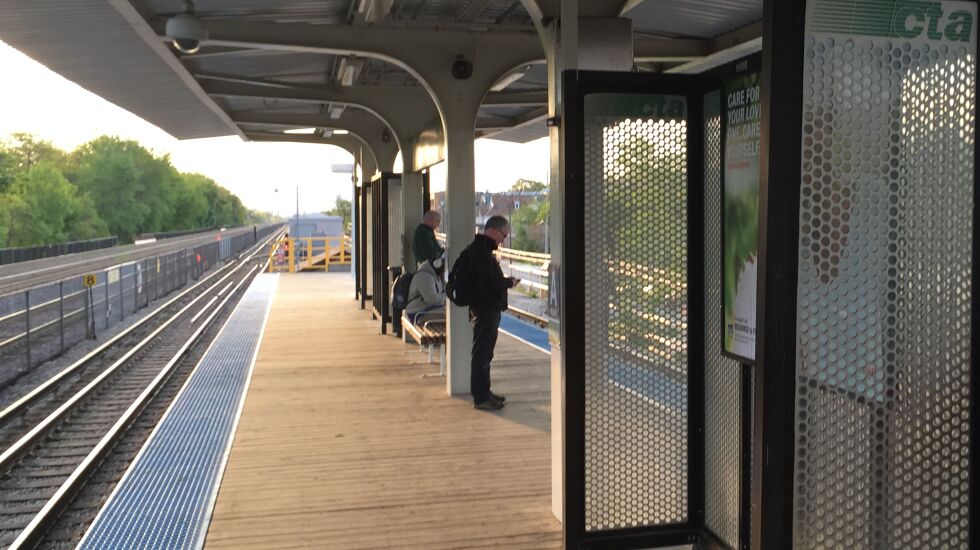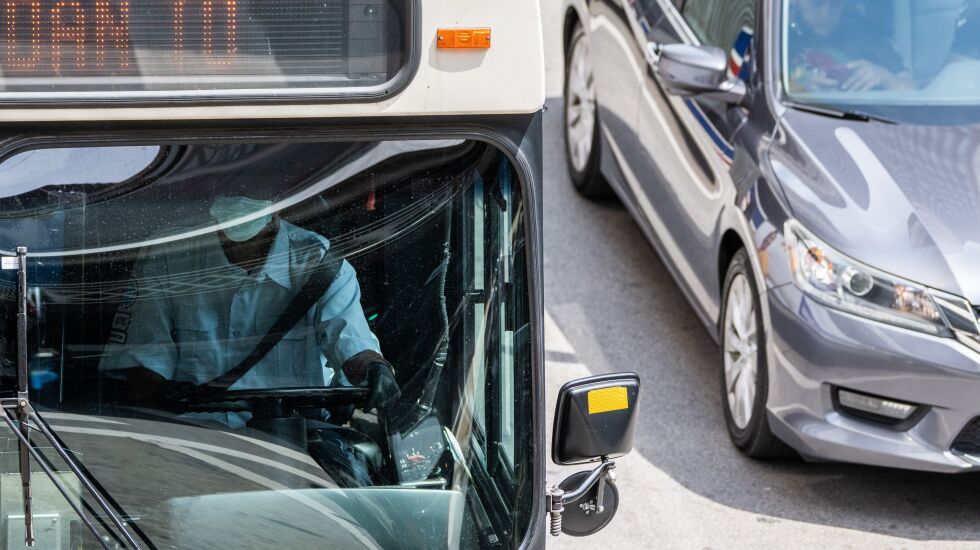
Embattled CTA President Dorval Carter Jr. is blaming a shortage of employees — no different than the hiring problems plaguing all businesses — for service troubles that cause CTA buses and trains to appear in online transit trackers but never show up.
During a virtual interview this week on the WTTW-TV program “Chicago Tonight,” Carter said he simply doesn’t have “enough employees right now to meet all of my scheduled service.”
Carter said he is “working to make changes” to the Bus Tracker and Train Tracker technology systems that tell riders where a bus a train is or how long it will take to arrive. That should, he added, “mitigate” the problem exasperated riders call “ghost” buses and trains.
But Carter’s primary focus remains hiring more employees to solve the rampant shortage that has sidelined so many buses and trains.
“I’m really focused on how we increase our workforce and ... find a way to get the number of employees that we need back at CTA so that we can provide the level of service that our customers are expecting of us,” Carter told WTTW.
He has not responded to repeated requests for an interview by the Chicago Sun-Times.
“We’re recruiting. We’re hiring. We’re offering special incentives. We’re doing all of the things that we can. And I’ll be announcing more of that in the next week as we try to basically address what is, quite honestly, a problem that just about every major company in the country is facing right now.”
Asked whether the worker shortage is caused by “mass retirements, folks choosing to leave the workforce entirely” or spikes in the number of employees taking sick days, Carter said: “All of the above.”
Besides “the impact of the ‘Great Resignation,’” and retirements, Carter said, there’s the ongoing effect of COVID-19.
“With these subsequent variants, we’re continuing to have an increasing and ongoing amount of sick leave because of people recovering from the virus itself,” he said.
Eric Dixon, president of the Amalgamated Transit Workers Union Local 308, has accused the CTA of taking too long to replace retiring employees.
But Carter countered that no amount of planning could have anticipated or solved the severity of the shortage that is also impacting the airline industry and other big-city mass transit systems.
“This isn’t a question of whether or not CTA is making the effort” to recruit and hire, Carter said.
“We’re actively holding job fairs. ... We are bringing back retired employees to work part time. We’re doing all of the things we can to fill these vacancies as quickly as possible.”

Spotty service isn’t the only issue discouraging CTA riders from returning.
There’s also a steady stream of strong-armed robberies and more serious crimes. Two people were stabbed on CTA trains within three days, just two weeks ago.
Hiring 200-plus unarmed security guards to supplement the work of Chicago Police Department officers is simply not enough to reassure riders. They’re unnerved by what Carter calls “not just crime, but also just bad behavior and poor conduct that we know is occurring on our system, particularly overnight.”
Carter was asked if the CTA is safe enough for him to advise his friends and family members to use it, in the early evening at later at night.
He responded by noting the system carries 800,000 people each day — “the equivalent of the city of Denver.”
“Crime on the CTA is relatively low,” he said “You’re relatively safe on CTA.”
Still, he added, “we obviously have to continue to do more to address the crime that is occurring there and find ways to mitigate that.”

Backs TIF funding plan for Red Line
Carter also defended the CTA’s controversial plan to create a new transit tax-increment-financing district to fund the Red Line expansion. The TIF district would cover a half mile on either side of the Red Line, from Madison Street to Pershing Road, and use property tax growth over the next 35 years to bankroll $950 million of the $3.6 billion cost of extending the Red Line from 95th Street to 130th.
“I have yet to see any project of this magnitude that got 100% federal funding — and I’ve been in this business for over 30 years,” he said.
“The practical reality is that these projects will not get funded unless you’re able to provide a non-federal funding source to support a portion of it.”
Downtown Ald. Brendan Reilly (42nd) acknowledged the Red Line South extension would “do a lot of good on the South Side” by “creating new economic hubs” and eliminating a mass transit desert.
But Reilly said he has “serious concerns about committing so much TIF revenue to shoulder a huge burden” of this project.
“Gas taxes are supposed to pay for the bulk of our transit projects — and federal funds should pay for most, if not all, of this expensive infrastructure project,” Reilly wrote in an email to the Sun-Times.
“Although this initiative would not raise the tax levy for property taxpayers within these TIF boundaries, it will absolutely divert future revenues away from the local taxing bodies, like CPS, the Park District and the City. As costs rise for those units of government, and new property tax revenue within these TIFs is being diverted for the Red Line project, those bodies will have no choice but to further raise taxes or make cuts to services.”
Reilly noted the City Council “did a version of this once before” to fund the Red-Purple Modernization Project and capture federal money for it in the waning days of the Obama administration.
At the time, alderpersons were “told we’d never do it again,” he said.







